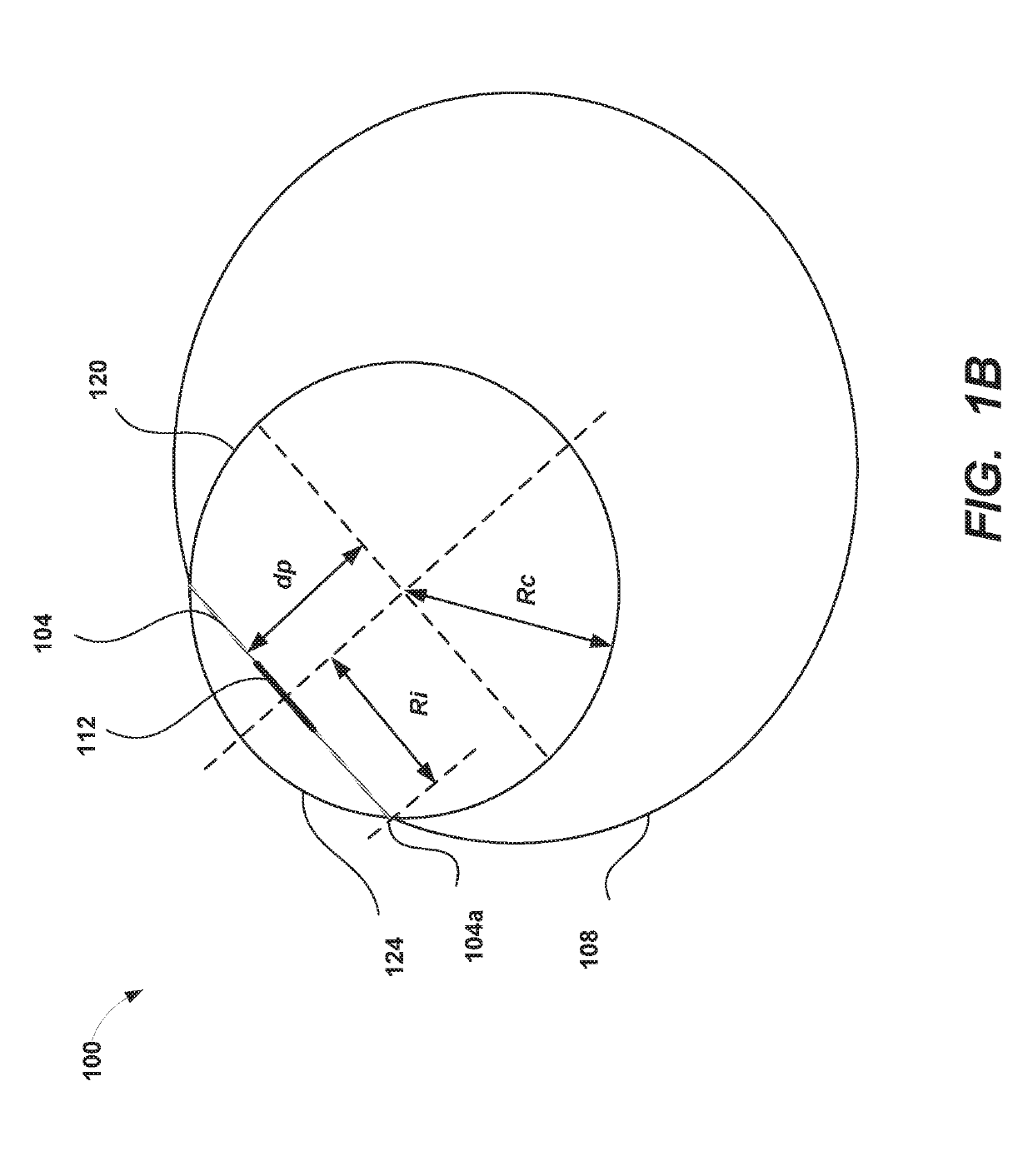Iris boundary estimation using cornea curvature
a technology of corneal curvature and iris boundary, applied in image analysis, instruments, computing, etc., can solve the problems of many challenges in the extraction of biometric information, broadly called a biometric template, and achieve the effect of reducing the number of challenges
- Summary
- Abstract
- Description
- Claims
- Application Information
AI Technical Summary
Benefits of technology
Problems solved by technology
Method used
Image
Examples
example method
for Iris Segmentation Using Corneal Bulge
[0038]FIG. 2 is a flowchart that illustrates an example routine 200 for determining the limbic boundary of an eye and using the limbic boundary in biometric applications. The routine 200 begins at block 204. At block 208, the routine 200 obtains camera calibration information and estimates physiological parameters of the eye. At block 208, the eye imaging camera may (optionally) take calibration images and perform the camera calibration (e.g., obtain the camera calibration matrix K). In other implementations, the camera calibration can be performed during manufacturing, and the calibration information is stored in the device. The eye physiological parameters (e.g., Rc, Ri, dp) can be estimated from the general population, or they can be determined for a particular individual from images of the particular individual's eyes.
[0039]At block 212, the routine 200 receives an eye image taken by the eye imaging camera. At block 216, the three-dimensi...
example wearable
Display System
[0046]In some embodiments, display systems can be wearable, which may advantageously provide a more immersive virtual reality (VR) or augmented reality (AR) experience, wherein digitally reproduced images or portions thereof are presented to a wearer in a manner wherein they seem to be, or may be perceived as, real.
[0047]Without being limited by theory, it is believed that the human eye typically can interpret a finite number of depth planes to provide depth perception. Consequently, a highly believable simulation of perceived depth may be achieved by providing, to the eye, different presentations of an image corresponding to each of these limited number of depth planes. For example, displays containing a stack of waveguides may be configured to be worn positioned in front of the eyes of a user, or viewer. The stack of waveguides may be utilized to provide three-dimensional perception to the eye / brain by using a plurality of waveguides to direct light from an image inj...
PUM
 Login to View More
Login to View More Abstract
Description
Claims
Application Information
 Login to View More
Login to View More - R&D
- Intellectual Property
- Life Sciences
- Materials
- Tech Scout
- Unparalleled Data Quality
- Higher Quality Content
- 60% Fewer Hallucinations
Browse by: Latest US Patents, China's latest patents, Technical Efficacy Thesaurus, Application Domain, Technology Topic, Popular Technical Reports.
© 2025 PatSnap. All rights reserved.Legal|Privacy policy|Modern Slavery Act Transparency Statement|Sitemap|About US| Contact US: help@patsnap.com



